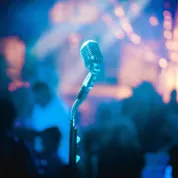
Jazz fusion is a unique genre that combines the intricate elements of jazz with other music styles. This blend draws inspiration from rock, funk, and occasionally even folk or hip-hop, yet always maintains the improvisational characteristic of jazz. It is also typically instrumental, with a lot of versatility through the use of traditional jazz instruments such as acoustic guitars, pianos, trumpets, saxophones, basses, and drums, as well as electronic counterparts such as synthesizers, drum machines, and electric guitars, which introduce textures found in other musical domains.
On occasions where vocals are present, they tend to be abstract, using non-lexical vocables to weave melodies that complement the instrumental improvisation. This approach facilitates a seamless integration of vocal and instrumental expressions, enhancing the genre's dynamic and experimental nature.
Jazz fusion's emphasis on improvisation means that no two performances are exactly alike, with the contributions of highly skilled musicians leading to unique and often unexpected performances. To truly grasp the essence of fusion jazz, you need to concentrate and immerse yourself in its sound, as the depth and complexity of fusion songs tend to be hard to describe, going well beyond the format of mainstream music.
A Brief History of Jazz Fusion
Jazz fusion began in the late 60s and early 70s, blending jazz with the popular groove of funk and the energy of rock 'n' roll. This was a time when music was all about breaking rules and trying new things. Jazz fusion artists didn't just stick to jazz; they experimented, mixing it with different styles to create something new and exciting. This willingness to explore and innovate keeps jazz fusion fresh and evolving.
Miles Davis, a jazz legend, played a huge role in pushing jazz fusion into the spotlight. His album "Bitches Brew" is a classic, mixing electric jazz with rock and funk in a way no one had heard before. Davis wasn't afraid to use new instruments and technology, which helped jazz fusion grow. He worked with other big names, making the jazz fusion scene even richer.

In the 70s, jazz fusion really took off. Albums from this time mixed complex jazz chords with the loud, raw sound of rock and the catchy rhythms of funk. This wasn't just background music; it was a new, bold sound that demanded attention. Bands like Weather Report and The Mahavishnu Orchestra, led by jazz fusion artists like Joe Zawinul and John McLaughlin, were key players. They showed off incredible skill and made music that was both smart and full of energy.
Guitarists like Larry Coryell and John McLaughlin, keyboardists Chick Corea and Herbie Hancock, and drummers like Tony Williams added their own touch to jazz fusion. They brought in new sounds and rhythms, making the music more complex and interesting. Their work has had a lasting impact, making them some of the most respected jazz fusion artists out there.
The 10 Best Jazz Fusion Artists
10. Jean-Luc Ponty
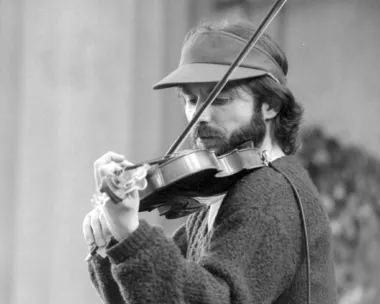
Jean-Luc Ponty, a virtuoso of the electric violin, has had an undeniable impact on the jazz fusion genre, distinguishing himself from other jazz fusion artists with his innovative use of the violin. Born in France in 1942, Ponty's classical training laid the groundwork for his intricate compositions and technical prowess, allowing him to explore the intersections between jazz, rock, and electronic music. His collaborations with Frank Zappa and the Mahavishnu Orchestra in the early 1970s propelled him into the spotlight, showcasing his ability to fuse diverse musical elements seamlessly.
Ponty's solo work, including albums like "Enigmatic Ocean" and "Imaginary Voyage," further solidified his reputation as a pioneer of jazz fusion. These projects are characterized by their complex arrangements, groundbreaking use of synthesizers, and, of course, Ponty's signature electric violin solos. His playing style, which combines elements of bebop, rock, and avant-garde, has opened up new possibilities for string instruments within jazz fusion, making him an influential figure for both violinists and broadly within the genre.
Beyond his instrumental innovations, Ponty's compositions have contributed to the evolution of jazz fusion by challenging traditional structures and introducing electronic music elements. This blend of sophistication and accessibility has appealed to a wide audience, bridging the gap between jazz enthusiasts and fans of other genres. Ponty's impact extends beyond his recordings; his live performances, marked by energy and improvisation, have captivated audiences worldwide, further cementing his legacy as a key figure in the development of jazz fusion.
9. Brecker Brothers
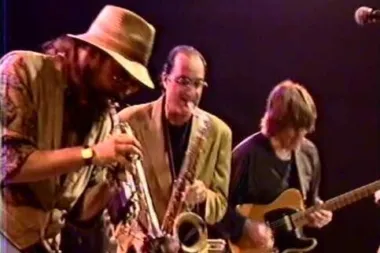
The Brecker Brothers, Randy and Michael Brecker, took jazz-funk fusion to another level, with a distinctive fast paced sound and prowess that remains unrivaled. Launching their careers in the early 1970s, they quickly became one of the most sought-after horn sections in the genre, contributing to the work of numerous jazz fusion artists and bands. Their self-titled debut album in 1975 set a new standard for horn-driven jazz fusion, blending intricate melodies with funky grooves and sophisticated improvisation.
Randy's trumpet and flugelhorn, paired with Michael's tenor saxophone, created a powerful and dynamic sound that was both innovative and accessible. Albums like "Heavy Metal Be-Bop" and "Straphangin'" showcase their ability to navigate complex musical landscapes with ease, incorporating elements of funk, soul, and electronic music into their jazz foundation. Their influence extended beyond their recordings; through their collaborations and session work, they helped shape the sound of jazz fusion in the 1970s and 1980s.
The Brecker Brothers' legacy in jazz fusion is marked by their technical mastery, compositional creativity, and willingness to experiment with new sounds and technologies. They paved the way for future generations of musicians to explore the boundaries of jazz, rock, and R&B, proving that these genres could coexist and complement each other in new and exciting ways. Their work has left an indelible mark on jazz fusion, cementing their status as pioneering artists in the genre.
8. Jeff Beck
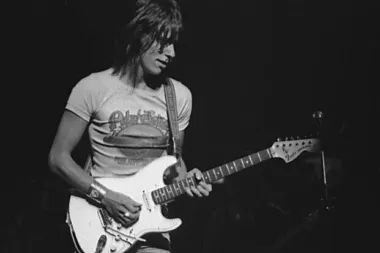
Jeff Beck, a name synonymous with guitar virtuosity, has played a pivotal role in the evolution of jazz fusion. His career, spanning over five decades, showcases an extraordinary ability to blend genres, from blues and rock to jazz fusion. Beck's innovative approach to the electric guitar, characterized by his use of feedback, distortion, and extended techniques, has made him a standout among jazz fusion artists. His 1975 album "Blow by Blow" is a testament to his fusion of rock and jazz, featuring instrumental tracks that highlight his emotive playing style and technical skill.
Beck's influence on jazz fusion is not limited to his solo work. His collaborations with other artists have often ventured into fusion territory, blending jazz's improvisational aspects with rock's energy and blues' soulfulness. Albums like "Wired" and "Jeff Beck's Guitar Shop" illustrate his versatility and willingness to explore complex musical landscapes, incorporating synthesizers and advanced recording techniques to push the boundaries of traditional guitar sounds.
What sets Jeff Beck apart from other jazz fusion artists is his relentless pursuit of new sounds and textures. He has continually evolved his approach to the guitar, experimenting with different instruments, amplifiers, and effects to create a unique sonic palette. This spirit of innovation has inspired generations of guitarists across genres, making Beck a figure of immense influence in jazz fusion and beyond. His legacy is not just in the notes he played but in his approach to music as a limitless form of expression, constantly evolving and defying categorization.
7. Steely Dan

Unlike most jazz fusion artists, Steely Dan developed a broad mainstream following by fusing jazz with radio friendly pop and rock, underpinned by complex yet catchy lyrics and absolute studio perfectionism. Founded by Donald Fagen and Walter Becker in the early 1970s, the band stood out for its sophisticated harmonies, intricate chord progressions, and flawless production, qualities that have endeared them to a broad audience spanning jazz and rock fans alike. Their album "Aja," released in 1977, remains a landmark in the genre, celebrated for its technical brilliance and musical depth.
The duo's approach to recording was meticulous, employing some of the best session musicians to achieve their vision. This level of precision in the studio, combined with their songwriting prowess, allowed Steely Dan to explore the nuances of jazz fusion without sacrificing accessibility. Songs like "Deacon Blues" and "Peg" feature solos from renowned jazz musicians, seamlessly integrated into the band's sound, highlighting their ability to bridge the gap between genres.
Steely Dan's legacy within jazz fusion lies not only in their musical output but in their approach to composition and production. They demonstrated that jazz elements could be successfully incorporated into pop and rock music, achieving commercial success without compromising on complexity or quality. The band's influence extends beyond their discography, inspiring artists and bands to experiment with genre blending and sophisticated musicianship. Steely Dan remains a benchmark for excellence in jazz fusion, celebrated for their innovative contributions to the genre.
6. Frank Zappa
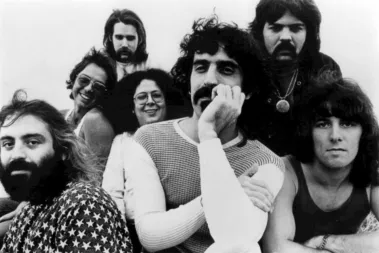
Frank Zappa's contribution to jazz fusion is as eclectic and boundary-pushing as his career. Known for his irreverent humor, intricate compositions, and avant-garde approach, Zappa incorporated jazz fusion elements into his work in a way that was entirely his own. Throughout the 1960s and 1970s, Zappa and his band, The Mothers of Invention, broke musical conventions, blending rock, jazz, classical, and everything in between, creating sounds that were both complex and engaging.
Zappa's albums like "Hot Rats" and "The Grand Wazoo" are quintessential jazz fusion works, characterized by their extended improvisations, complex rhythms, and diverse instrumentation. His ability to compose intricate pieces and then blend them with improvisational performances by some of the top musicians of the time, including Jean-Luc Ponty and George Duke, showcased his unique approach to jazz fusion.
Beyond his musical output, Zappa's influence on jazz fusion extends to his attitudes towards music production, band leadership, and the music industry. He was a relentless experimenter, constantly pushing his musicians to their limits and beyond, fostering an environment where creativity and technical skill flourished. His work challenged the norms of what jazz fusion could be, expanding the genre's possibilities and inspiring a wide array of artists to explore their own unconventional paths. Frank Zappa remains a towering figure in jazz fusion, celebrated for his innovative contributions and unapologetic originality.
5. Béla Fleck and the Flecktones

Béla Fleck and the Flecktones, spearheaded by Béla Fleck, have significantly enriched the jazz fusion landscape with their groundbreaking integration of bluegrass, jazz, funk, and classical music, largely thanks to Fleck’s innovative banjo techniques. Since their formation in 1988, the band has captivated audiences with their musical agility and inventiveness, exemplified in albums like "Flight of the Cosmic Hippo" and "UFO Tofu". Each member brings a unique element to the band, with Victor Wooten on bass, Future Man on the Synthaxe Drumitar, and Howard Levy playing harmonica and keyboards, their collaborative efforts produce a sound that’s distinctly their own, yet universally appealing. Their explorations into the realms of electronic music, while staying grounded in acoustic roots, showcase their versatility and have cemented their status among the best jazz fusion artists.
The Flecktones’ contributions to jazz fusion are marked by their exceptional live performances, where the spontaneity and interaction on stage bring their compositions to life in new and unexpected ways. Their ability to blend complex musical theory with accessible melodies has broadened the appeal of jazz fusion, engaging listeners who might not typically venture into the genre. By pushing the boundaries of what jazz fusion can encompass, Béla Fleck and the Flecktones have inspired a new generation of musicians to explore diverse musical landscapes, making an indelible mark on the genre.
4. Weather Report

Weather Report, founded by Joe Zawinul and Wayne Shorter in 1970, has been a monumental force in the world of jazz fusion, known for their innovative sounds and complex compositions. The band’s dynamic range, from the ethereal "A Remark You Made" to the vibrant "Birdland," demonstrates their ability to transcend traditional jazz boundaries, incorporating elements of world music, funk, and R&B. Their influence on jazz fusion artists and the genre itself cannot be overstated, with albums like "Heavy Weather" and "Black Market" being seminal works that continue to inspire musicians and fans alike.
The introduction of bassist Jaco Pastorius in 1976 marked a pivotal moment for the band, bringing a new level of innovation and artistry to their music. Pastorius’s use of harmonics and inventive bass lines on albums like "Heavy Weather" redefined the role of the electric bass in jazz, contributing to the band’s legendary status. Weather Report's legacy is not just in their recordings but in their approach to music as a constantly evolving art form, encouraging jazz fusion artists to experiment and push the genre in new directions.
3. Al Di Meola

Al Di Meola is one of the most dynamic guitarists to ever grace the instrument. Characterized by highly skilled and fast guitar technique, with complex compositions that blend elements of jazz, rock, Latin, and his own personal touch of Mediterranean music. Emerging in the 1970s with Return to Forever, Di Meola quickly established himself as a solo artist with a distinctive sound, showcased in albums like "Elegant Gypsy" and "Land of the Midnight Sun". His technical prowess, coupled with his emotional depth and compositional skills, has made him a standout figure among jazz fusion artists.
Di Meola’s exploration of acoustic guitar music, particularly his collaborations with Paco de Lucía and John McLaughlin, further demonstrated his versatility and commitment to pushing musical boundaries. Through his career, Di Meola has not only contributed significantly to the jazz fusion genre but has also influenced guitarists across various music styles. His dedication to exploring new musical territories and his ability to seamlessly integrate different cultural influences into his music have earned him a revered place in the history of jazz fusion.
2. The Mahavishnu Orchestra

The Mahavishnu Orchestra, led by guitarist John McLaughlin, redefined the jazz fusion genre in the early 1970s with their explosive combination of Eastern influences, complex rhythms, and electrifying improvisations. Their debut album, "The Inner Mounting Flame," introduced a level of virtuosity and compositional complexity that was unparalleled at the time, blending elements of rock, jazz, and Indian classical music into a fiery and mesmerizing sonic experience. McLaughlin's use of the electric guitar, combined with Billy Cobham's powerful drumming, Jerry Goodman's violin, Jan Hammer's keyboards, and Rick Laird's bass, created a groundbreaking sound that has influenced countless jazz fusion artists and bands.
Over the course of several albums, including the seminal "Birds of Fire," The Mahavishnu Orchestra pushed the boundaries of jazz fusion, exploring spiritual themes and pioneering new recording techniques. Their music was not just about technical prowess; it also conveyed a deep emotional and philosophical message, resonating with listeners seeking both musical innovation and substantive depth. The band's ability to fuse different musical traditions into a cohesive and dynamic whole has left a lasting legacy in the jazz fusion genre, inspiring musicians to explore the intersections of culture, spirituality, and improvisation in their work.
1. Return to Forever
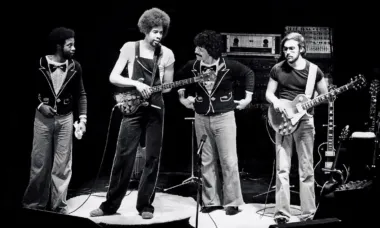
At the top of our Jazz fusion artist list is a band of musicians that are each worthy of being on this list on their own. Together, the superstar members of Return to Forever easily take the number one spot. Founded by Chick Corea in the early 1970s, Return to Forever also featured three musicians commonly regarded among the greatest of all time of their respective instruments, including Stanley Clarke's innovative bass techniques, Lenny White's dynamic drumming, and the aforementioned Al Di Meola's on guitar.
Corea's visionary approach, combining acoustic piano virtuosity with electronic synthesizers, set the stage for a new sound in jazz, prominently Their albums "Light as a Feather", "Hymn of the Seventh Galaxy" and "Romantic Warrior" are cornerstones of the jazz fusion genre, showcasing the band's technical skill, complex compositions, and exploratory spirit.
Return to Forever's influence extends beyond their impressive musicianship and innovative use of technology; they also played a critical role in bringing jazz fusion to a wider audience, thanks to their accessible melodies and engaging performances. Corea's compositions for the band often drew on his interest in science fiction and fantasy, adding a narrative element to their music that captivated listeners.
The legacy of Return to Forever lies in their ability to seamlessly integrate diverse musical elements into a singular, compelling vision. The groundwork they laid inspired future generations of jazz fusion artists to push creative boundaries and explore new horizons, making them our top jazz fusion artists of all time.

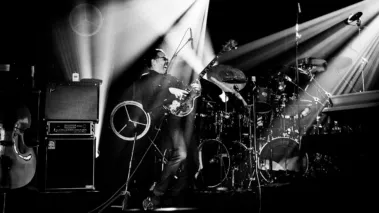

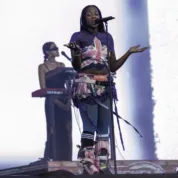
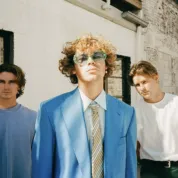
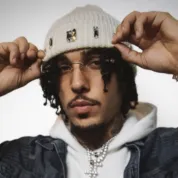

Leave a Reply!
Fully agree, though not with the relative ranks with each and every one of the bands in this selection. This article is simply the fusion starter guide on the internet.
Im not feeling Steely Dan. I think of the Crusaders, Weather Report, Blood Sweat and Tears and Billy Cobham first.
Steely Dan occupied a space between fusion and pop-rock that's hard to categorize, so I get it. But talent wise they deserve a spot with others on this list.
What? No Weather Report?
They're #4
wow...finally a best-of list I agree with 100%. Thank you for nailing it solid.
Thanks! You can lose some folks when you start putting names like Al Dimeola on lists, so glad to hear it.
Definitely agree that Return to Forever at #1 all of the bands were great. RTF was much more cohesive and coherent. Hard to beat that lineup of Chick, Stanley, Lenny & Al
No doubt. They were beasts. Thanks for sharing!